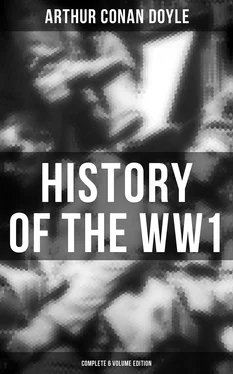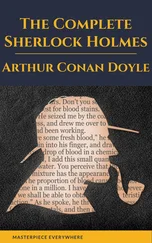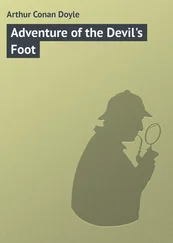In accordance with this resolution, Haig’s First Corps moved, on October 20, through Poperinghe and Ypres and took their place upon the north or left side of the Seventh Division. On their own left in this position was the French cavalry corps of General de Mitry, while the Third Division of British cavalry was on their right. As the movement commenced Sir John French had a personal interview with General Haig, in which he held out hopes that the greater part of the new German levies had been deflected to hold our southern advance, and that he would only find the Third Reserve Corps and some Landwehr in front of him to the north of Ypres. His object was to advance upon the line of Bruges and drive the enemy towards Ghent. Meanwhile the gallant little Belgian army, which was proving itself a glutton at fighting, was entrenched along the line of the Ypres Canal and the Yser River, where they held their own manfully in spite of all that they had endured.
The first large landmark in the direction of Bruges was Thorout, and towards this the First Corps, with the Third Cavalry Division upon its right, took its first steps, little thinking that it was butting forward against an approaching army of at least double its own strength. It was very quickly made to realise its position, however, and any dreams of a victorious entry into Bruges were speedily dispelled. Only too fortunate would it be if it could hold its own line without retreat and disaster. Upon the 21st Haig’s men attacked Poel-Chapelle and Passchendaale, French cavalry and Territorials (the Eighty-seventh and Eighty-ninth Divisions) under General Bidon advancing on their left, while the Seventh Division, as already described, kept pace upon its right. There was strong opposition from the first, but the corps advanced in spite of it until the pressure from the north became too severe for the French, whose flank was exposed to the full force of it.
The British attack upon the morning in question was planned as follows. The Second Division was to advance upon Passchendaale. The First had orders to take Poel-Chapelle. The latter movement was headed by the 3rd Brigade, who were directed by General Landon to go forward about nine o’clock, the 1st Queen’s having the station for their objective while the 1st South Wales Borderers attacked the village. The 1st Gloucesters were in reserve. The enemy met the attack with shell-fire, which it was difficult to locate, as the country was flat and enclosed. The progress of the movement, however, was steady though slow. About ten o’clock there were signs of a considerable hostile infantry advance from the north. The attack, however, made good progress up to midday, when there was a general retirement of the French Territorials, followed later by the French cavalry upon the British left. They moved back towards Bixschote. The Gloucester Regiment, who had been thrown out to reinforce that flank, were also driven back, and were in turn reinforced by the Coldstream Guards. This battalion executed a bayonet charge in clearing the small village of Koekuit, but later on had to retire, finding their flank exposed. It should be mentioned that one French corps, the Seventh Cavalry Division, kept its position upon the British left, and it is also only fair to point out that as the German advance was mainly from the north, it was upon the left flank, covered by the French, that it would fall. The 1st Camerons were now dispatched to the flank to stiffen the French resistance, taking up their position near the inn which is midway upon the road between Steenstraate and Langemarck, north of the village of Pilken —an inn with which they were destined to have stirring associations. With the support of the 46th Battery, the Highlanders held up a German brigade which was thrusting through behind our main line; but farther west, in the Steenstraate direction, the defence against a northern advance was miserably thin, consisting only of one company of the Sussex Regiment and the 116th Battery. In the circumstances the more success Haig’s troops attained in front, and the more they advanced, the more dangerous was their position upon the flank.
About 2:30 the German advance from the north became more formidable, and the 1st South Welsh Borderers, between Langemarck and Poel-Chapelle, were heavily counter-attacked and suffered considerable loss, between two and three hundred in all. Two companies of the 2nd Welsh were pushed up to their help. It was clear, however, that the advance could not be continued. The 1st Brigade was therefore ordered to hold the line between Steenstraate and Langemarck, with their centre at the inn north of Pilken, so as to face the German advance from the north. Then from Langemarck the British line turned southwards, being carried on for two miles by the 3rd Brigade to hold the enemy who were coming from the east. The 2nd Brigade was in reserve at Boesinghe. During this long and difficult day the Second Division, operating upon the right of the First, was not subjected to the same anxiety about its flank. It advanced upon its objective in the face of severe opposition, ending more than once in a brief bayonet encounter. Several counter-attacks were made by the Germans, but they were all beaten back with loss. About two o’clock, however. the Second Division learned of the flank pressure which was holding up the First Division, and also of the extreme need for help experienced by the 22nd Brigade of the Seventh Division on their right. In these circumstances it was necessary to abandon the idea of further advance and to send south those reinforcements, the opportune arrival of which has been already described.
As a net result of the two days’ operations General Haig was not able to attain the line of Passchendaale—Poel-Chapelle, as originally planned, but he gained sufficient ground to establish himself from Langemarck to Zonnebeke, more than half-way to his objective. The whole character of the operations during these days was more of the familiar British type, being conducted upon the surface of the earth rather than under it, and cavalry making its last appearance for many a long day. Many fine deeds of valour were done. In one of these Captain Rising, of the Gloucester Regiment, with ninety men, defended some point with such heroic tenacity that when, some days afterwards, the Brigadier attempted to get the names of the survivors for commendation not one could be found. Quaintly valorous also is the picture of Major Powell, of the North Lancashires, leading his wing with a badly-sprained ankle, and using a cottage chair for a crutch, upon which he sat down between rushes. It is hopeless, however, and even invidious to pick instances where the same spirit animated all. The result was definite. It had been clearly shown that the enemy were in considerably greater strength than had been imagined, and instead of a rearguard action from weak forces the British found themselves in the presence of a strong German advance. All day large forces of the enemy were advancing from Roulers and were impinging upon different points of the Franco-British line. These troops were composed of partially-trained men, volunteers and reservists, but they attacked with the utmost determination, and endured heavy losses with great bravery. It is a remarkable proof of the elaborate preparations for war made by Germany that, behind all their original gigantic array, they still had ready within the country sufficient arms and uniforms to fit out these five new army corps. He who plans finds it easy to prepare, and whoever will compare this profusion of munitions in Germany with the absolute lack of them in the Allied countries will have no further doubt as to which Government conspired against the peace of the world.
On October 21, Sir John French began to feel that there were new factors in his front. In the evening, at a meeting with Haig and Rawlinson, he discussed the unexpected strength of the German reinforcements and admitted that the scheme of an advance upon Bruges would become impossible in the face of such numbers. Intelligence reports indicated that there was already a German army corps in front of each British division. General Joffre had promised considerable French reinforcements upon October 24, and all that could be done was for the British troops to hold their ground to the last man and to resist every pressure until the equality of the forces could be restored. Could they hold the line till then? That was the all-important question.
Читать дальше












